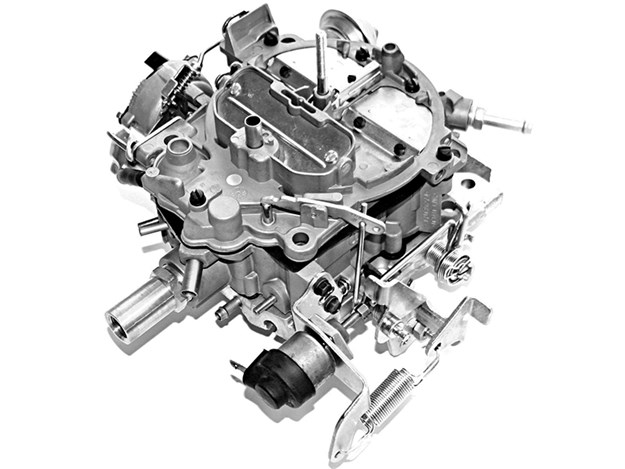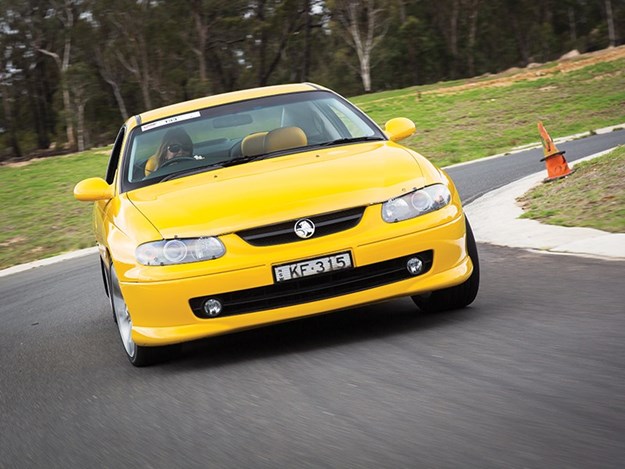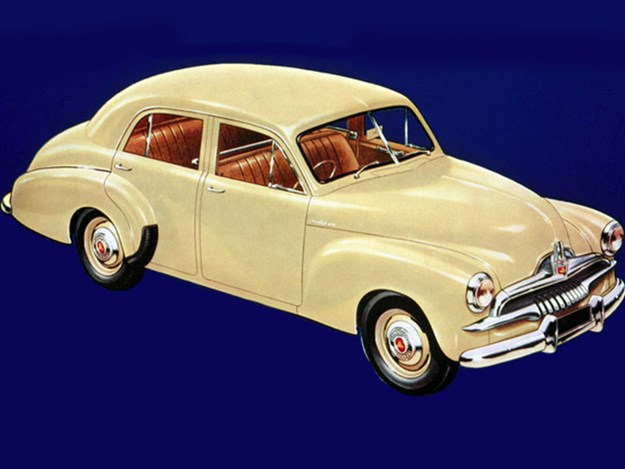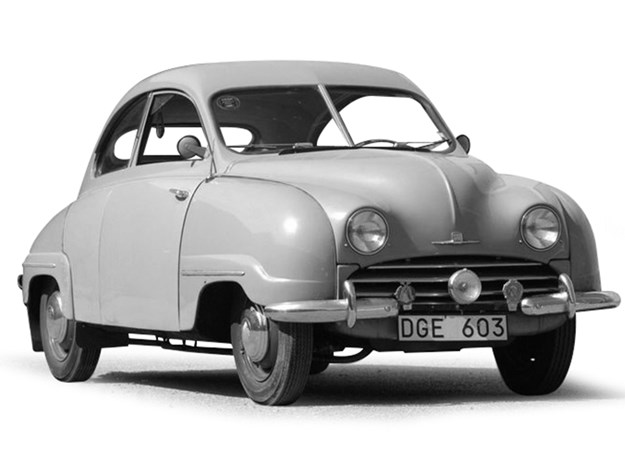Tales from underside - Mick's Workshop 466



|
Parts time adding extra days, Starion secured, on the Monaro trail, dunny roll filters and more
Gaaarrdamnnit! With a capital G! You may have noticed that one of my hobby horses lately has been the supply of parts. Everything seems to be in short supply and freight is often costing silly amounts of money. Well, I’ve just had one of those mornings, working on Ed Guido’s Project VK.
Three components I’ve sourced have failed to meet the cut. The first was the air gap manifold we ordered, which overall looks terrific. However, the cut-out for the distributor was too small and we’ve had to modify it. That’s no big deal if, like me, you have a mini machine shop in the back of the shed and know how to use it. It’s more of a drama for the distributor who has probably ordered a palette of the things and now needs to get them fixed.
Then came the clamp to hold down the distributor. It was too long and would therefore foul the transmission, while the stud supplied was the wrong diameter.
Last and not least was a nice shiny thermostat housing that came with the wrong size O-ring. Here’s some advice. First, build some extra time into your project because, believe me, you’re likely to need it. Second, buy locally so you can have a chat with the supplier. Third, don’t lose it with the supplier. More often than not they’re a victim in this as well and you’ll get a lot further by calmly explaining the situation and working through what needs to happen to fix it.
And if you do decide to have a rant, do it quietly in the shed where no-one can hear you – least of all your partner! The last thing they want to know is this expensive and time-consuming project, that’s meant to be fun, is putting you at risk of blowing a gasket.
Maybe that’s the crucial thing to remember: these projects are meant to be fun and there’s no point in getting cranky when things go a little sideways.
Here's my tip:
Carby ambitions

When you’re in the throes of a build, particularly with a big hairy V8, it’s tempting to go out and buy the biggest capacity carburettor you can lay your hands on. Think twice. If you’re running it at full throttle down the drag strip, that makes a little sense. But for a road car, something with a more sensible flow rate will often work better. For example a 600cfm carb bolted to a big eight will often provide plenty of street power and run smoother than a 750.
LETTERS:
Starion Stutters

Mitsubishi’s Starion has a strong following and is sought by collectors today
Am not sure if I’ve jumped in the deep end, but I’ve gone out and bought a 1982 Mitsubishi Starion turbo, the one with the 2.0lt turbo engine. Overall it seems pretty good. It’s a little knocked around, not much rust, paint is mostly okay and the interior could do with a bit of work.
My main concern at the moment is the engine has a bit of a miss happening and I’m wondering if I’ve gone and bought trouble. Maybe it’s just a bit of buyer remorse? How would you go about sorting it out?
John Ambrose
THE FIRST thing you have to do is determine what’s causing that roughness. You need to be methodical and go over it one part at a time. What condition are the mechanicals in and how long has it been sitting around? You want to know the condition of the fluids, has it got tight valve clearances, what’s the compression like?
The best place to start is with the compression. Is it good on all four cylinders? Have we got ignition? Is the fuel fresh, are the turbo seals okay? It’s one of those cars that lends itself to patience. They have a few extra complications because of the turbo, but they’re not that hard. They’re a good little engine.
Remember there’s no such thing as a turbo that hasn’t been thrashed – that’s why people buy them. But don’t be scared! There’s nothing expensive in there and it can be repaired.
Monaro Advice

I’m almost ready to go out and start looking for my very own Monaro – exciting times! It’s a CV8 that I’m after, preferably a manual, other than that I’m not too fussy about the model so long as it’s a V8.
They seem to have a pretty good reputation, but I would like a third-party view. What should I be looking for?
Anne Murphy
A V8 car is a bit like a turbo – at some stage a V8 will be flogged. However, the good news is they’re very straightforward. Much of the mechanical side of things is Commodore, though it is a genuine Monaro and will eventually go up in value because of that – almost regardless of what shape it’s in.
There’s nothing more to look for in one of those than in an SS Commodore. Look for the bushes in the rear end, in the IRS, as they had a habit of cracking the cradle that the diff sat in if they were pushed too hard. Your normal front suspension and Z-bar bushes need to be checked as well.
As for the engine and transmission, they’re as strong as an ox. Really, just look for normal wear and tear, which is something your local mechanic can check out. If it survives the normal checks you’d perform on any later model car, I’d be pretty comfortable with it.
Good luck with it – they’re a great car.
Uncle Herb’s FJ

After reading the life story of the orange Regal on the cover of last issue, I thought you might find the history of my Uncle Herb’s FJ interesting. I still have it in its 100 per cent original condition.
As a teenager, I vividly remember my first sighting of my Uncle Herb’s Gold FJ in 1957. Little did I think today I would be the privileged owner.
Forty years later in ’97 I caught a glimpse of the said FJ in a shed when attending a family gathering. By this time Uncle Herb had passed 12 years previously, and on that day I approached Aunty Jean and said, "If you ever decide to sell the FJ, I would be prepared to give you $2000." She replied nobody has ever made an offer, all she got was people asking her, "how much do you want for the FJ’’, and she would tell them, "It’s not for sale".
She had eight sons and knew it would have caused problems if she gave it to one. In the end, she said, "I will sell it to you, but I would not sell it to anyone else," as she knew how I had looked after my cars and would do the same with the FJ.
I trailered it home with my HZ Kingswood (same as Ed Guido's, and still have it today). Payment was with a bank cheque with no receipt, and I was concerned I had no proof of ownership.
Three months later I received a long letter from Aunty, and in it, she said, "I was going through some drawers and found these papers if they are of no use you can throw them away," and they were the original registration papers. The FJ was purchased by William Good who was one of Uncle Herb's farm workers.
He traded it in on a new FE at Whitburn Motors in Seymour, so Herb paid 834 pounds to that dealer, and I have that receipt. Uncle just drove it for the next 12 years without any servicing, travelling 53,000 miles until put off the road in 1969 with a canary sticker. I still have the tyre down to the canvas all the way around - Uncle's response was, "I don't want to spend money on the old thing, stick it in the shed." The building was open at both ends and there it remained for the next 28 years.
Just an aside it had five different brands of spark plugs because every time one wore out it would be replaced by a second-hand one, just to keep it running.
You can imagine what state it was in when I brought it home. Apart from rust in the front passenger floor pan and a very battered left-hand front guard the body was (surprisingly) quite sound.
After a considerable amount of elbow grease and spit and polish and touch up paint, I had my panel beater friend replace the floor pan, fit another guard (still have the original) and spray the bonnet too. He wanted to spray the whole car but I declined the offer. Apart from those two panels, the paint remains in its original Crocus Cream duco.
My EJ and HZ are both on club plates but to get the FJ roadworthy would mean the loss of so much of its originality, and unless I was prepared to do some modifications, I don’t consider it fit to be on our modern roads of today.
Because of this I purchased a special trailer for it so I can take it out to car shows, behind the Kingswood, and that old girl loves to stretch her legs. The FJ is mechanically sound and I have driven it in Street Parades.
In one such parade here in Ballan our three sons and our nine grandchildren led the event in the three cars, which was something special. Keep up the good work of producing a great magazine.
Gary Shaw
IT SOUNDS like an old-style farmer’s car, where practicality often won over many other things, with the spark plugs being a great example. Just replace or fix the one that has stopped working!
I agree with what you’ve done. In that situation you could spend a fortune getting the car back on the road, but is that what you really want or need? Live with it as Uncle owned it, and pay homage to his ability to keep it going and to how tough those old cars were. I like your approach.
Bog Roll Filter
The Torrens farm find Bombodore on its quest to find its first owner
Haven’t yet got into the guts of the most recent issue, but Glenn’s feature on his resurrected Commodore (Project Bombodore) is looking to be a great read; love that part of the country, and the storyline theme of taking it back to meet the original owners is probably unique. I can relate to so much of the subject matter in UC mag that I just can’t help giving you guys an ear-bashing when something stands out.
For example, never ever thought I would hear about another clown using a roll of toilet paper in his vehicle’s oil filter system, but there it is in Mick’s column last issue. So there are at least two of these people out there.
In the case I know about, said vehicle was a V6 Commodore that the guy had bought new. He actually thought the toilet paper was doing a better job of filtering the oil!
Not the foggiest idea about flow rates, oil pressure and removal of contamination. This guy was one of those people who was an expert at everything, (or thought he was). Domestic electrical wiring and plumbing? No worries mate, till someone got a ‘boot’ out of the electrics or the toilet overflowed.
Eric Waples
GLENN’S BUILD is terrific. He took on some pretty big jobs (like replacing one of the sills) and dodged a major cost bullet. These days, quotes for body and paint seem to start at $50,000 and climb to $150k before you know it!
Yep, I’m almost speechless when I hear these stories. Ford, GM, Toyota – pick your favourite maker – will not spend a fortune hiring engineers to design these things (as in oil filters), if they could go down to the nearest supermarket and buy a batch of bog rolls! They are, after all, running a business.
There are these terms of measurement called microns, which are part of the brief for filter designers. And believe me, toilet rolls are less about microns than removing larger material. In short, it’s a really bad idea that risks jamming your oil galleries and lunching an engine. In some respects, you’d be better off with no filter at all.
Trivial Pursuit
Oldest Saab

The world’s oldest surviving production Saab is believed to be a 92, build number 4. A 1948 car, featured the company’s aerodynamic styling, a 764cc inline two- cylinder two-stroke powerplant, which was liquid-cooled, and a three-speed transmission with freewheeling ability. We last saw it on the auction circuit in 2020, when it was sold in Europe for Au$53,000.
Want some advice on a build or a potential car purchase? Heck we’ll even tackle long distance diagnosis. Drop MIck a line at uniquecars@primecreative.com.au
From Unique Cars #466, May/Jun 2022
Unique Cars magazine Value Guides
Sell your car for free right here
Get your monthly fix of news, reviews and stories on the greatest cars and minds in the automotive world.
Subscribe


.jpg)










.jpg)

